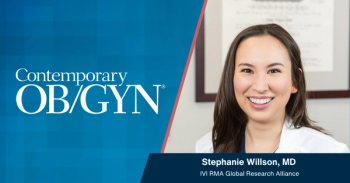
How to trust information on the Internet
The Internet has, without question, assumed a place in the life of most physicians and many patients. Though users vary in skill of use and sophistication of inquiry, some issues are common to all. The quandary about which websites may safely be trusted is one such issue. Health website quality guidelines, easily accessed on the Internet, aid users in their decisions.
The Internet has, without question, assumed a place in the life of most physicians and many patients. Though users vary in skill of use and sophistication of inquiry, some issues are common to all. The quandary about which websites may safely be trusted is one such issue. Health website quality guidelines, easily accessed on the Internet, aid users in their decisions.
“The Internet has, without question, assumed a place in the life of most physicians and many patients.”
Several organisations have developed criteria to help Internet users evaluate websites. Most of these sets of criteria are intended for a lay citizen audience rather than for medical professionals, though physicians and allied health staff, too, can benefit from their use. Some criteria have been developed by international bodies such as the Health on the Net Foundation (HON) (
Guidelines and codes
The non-governmental organisation HON was one of the first groups to establish criteria for health websites. In 1995, the participants at an international telemedicine conference voted to create a permanent body that would ‘promote the effective and reliable use of the new technologies for telemedicine in health care
The eHealth Code of Ethics (eCode)[2], developed by the Internet Healthcare Coalition (IHCC) in 2000 (
A third set of website evaluation guidelines has been developed by Hi-Ethics, a non-profit organisation whose stated goal is to establish and comply with the highest standards for privacy, security, credibility and reliability. In May 2000 it launched a 14-point set of principles[3] with which its members, primarily health service
The codes for health websites developed by HON, IHCC and Hi-Ethics are largely efforts that websites pursue on a voluntary basis. HON encourages users to report websites that display the HONcode seal but do not comply with code requirements so it can take regulatory action, but users do not know that HON will act unless they have visited HON’s website to learn about the code. The guidelines established by IHCC, too, assume good intent on the part of the webmaster and awareness on the part of the user. In many instances one or both of these events is lacking.
Guideline
Author
Topics addressed by primary principles
The US-based organisation URAC (
The HON, IHCC, Hi-Ethics and URAC standards are among the most commonly used and referenced standards, but they are not the only published criteria for website evaluation. The American Medical Association, for example, has published website standards for health information websites[5]. The Health Summit Working Group’s information quality tool (
Making sense of the guidelines
With so many published standards, citizens may rightly question how one can determine which websites to trust when searching the Internet. Despite the varied origins and applications of the guidelines, there are similarities in the criteria that form a foundation on which to base trust. In brief, these criteria include:
- the authors of the content and their credentials are clearly identified; the content authors have professional credentials that are relevant to the subject(s) addressed on the website;
- the financial interests of the site owners and sponsors are indicated clearly;
- the content should reflect current thought and its publication date noted so that users can assess whether it is up to date;
- the site should explain what personal information it collects, if any, and how this information will be used and secured;
- the site owners should provide current contact information and a tool that facilitates user feedback.
The Internet has evolved continuously throughout its relatively short history. As researchers better understand how users interact with Web content, new approaches to identifying trustworthy health and medical content may emerge. In the meantime, citizens and their physicians are well advised to employ a Web content standard emphasising ethical behaviour on the part of site owners/operators and quality of health information.
References:
References
1. Health on the Net Foundation. HON code of conduct for medical and health websites. Available at: www.hon.ch/HONcode/Conduct.html. Accessed 15 October 2003.
2. Internet Healthcare Coalition. eHealth code of ethics. Available at: www.ihealthcoalition.org/ethics/ehealthcode0524.html. Accessed 15 October 2003.
3. Health Internet Ethics. Ethical principles for offering Internet health services to consumers. Available at: www.hiethics.org/Principles/ index.asp. Accessed 15 October 2003.
4. URAC. URAC health Web site standards. Available at: webapps.urac.org/websiteaccreditation/Portal/Consumer/Standards.asp Accessed 15 October 2003.
5. Winker MA, Flanagin A, Chi-Lum B et al. Guidelines for medical and health information sites on the Internet. principles governing AMAWeb sites. Available at: www.ama-assn.org/ama/pub/category/1905.html Accessed 15 October 2003.
6. University of California at Berkely. Evaluating Web pages: techniques to apply & questions to ask. Available at: www.lib.berkeley.edu/TeachingLib/Guides/Internet/Evaluate.html Accessed 15 October 2003.
Newsletter
Get the latest clinical updates, case studies, and expert commentary in obstetric and gynecologic care. Sign up now to stay informed.









